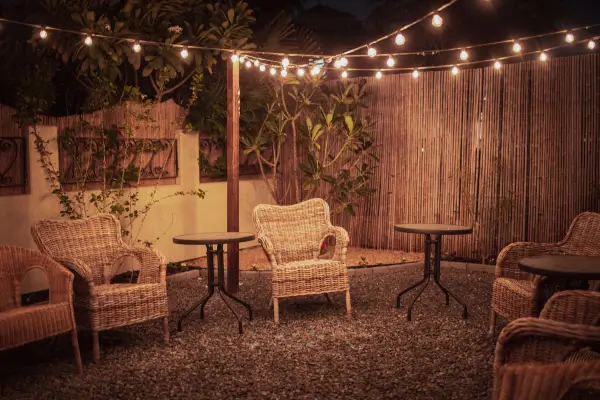A DIY rainwater collection system is an eco-friendly way to conserve water and reduce utility costs. It captures rainwater for gardening, cleaning, and other household needs.
This sustainable project promotes environmental conservation and self-sufficiency. With minimal materials, you can build a system that benefits both your home and the planet.
Rainwater harvesting reduces reliance on municipal supplies and prevents soil erosion. It’s ideal for areas prone to droughts or heavy rainfall.
In this guide, we’ll show you how to create a functional rainwater collection system. Let’s take a step toward sustainability together.
Why Collect Rainwater?
Rainwater harvesting provides several benefits, including:
- Reduces Water Bills – By using collected rainwater for irrigation, cleaning, and other non-drinking purposes, you can significantly lower your water expenses.
- Promotes Sustainable Living – Collecting rainwater reduces reliance on municipal water supplies and helps conserve fresh water resources.
- Prevents Soil Erosion and Flooding – Capturing rainwater minimizes runoff, which can cause soil erosion and overwhelm stormwater systems.
- Provides a Reliable Water Source – In areas prone to droughts, a rainwater collection system ensures a backup supply of water for gardens and outdoor use.
- Improves Plant Growth – Rainwater is naturally soft and free of chlorine and other chemicals, making it ideal for watering plants.
Materials and Tools Needed
Before you begin, gather the following materials and tools:
Materials:
- A large rain barrel or water storage tank (minimum 50 gallons)
- Gutter and downspout system to direct rainwater into the barrel
- Screen or mesh filter to prevent debris and insects from entering the water
- Overflow hose or pipe to direct excess water away
- Spigot or tap for easy access to collected water
- Cinder blocks or a sturdy platform to elevate the barrel for better water pressure
- First-flush diverter to remove contaminants from the initial rainfall
Tools:
- Power drill with a hole saw attachment
- Hacksaw or pipe cutter
- Measuring tape
- Screwdriver
- Waterproof sealant
- Adjustable wrench
- Level (to ensure proper installation)
Step-by-Step Guide to Building a Rainwater Collection System
Step 1: Choose the Best Location
The ideal spot for a rainwater collection system is beneath a roof downspout, where the gutter system channels rainwater. Ensure the ground is level and stable to support the weight of the barrel when full. Select an area that is easily accessible for maintenance.
Step 2: Prepare the Rain Barrel
- Drill a hole near the bottom of the barrel for the spigot.
- Insert the spigot and seal it with waterproof sealant to prevent leaks.
- Drill an overflow hole near the top and attach a hose to direct excess water away from the foundation.
- Cover the top opening with a mesh screen to filter out leaves and debris while keeping mosquitoes out.
Step 3: Modify the Downspout
- Use a hacksaw to cut the downspout so it directs water into the barrel.
- Attach a downspout diverter or elbow to guide the flow of water.
- Secure the connection with screws or weather-resistant adhesive.
Step 4: Install the Barrel
- Place the rain barrel on a sturdy, elevated platform made of cinder blocks or a wooden stand.
- Ensure the spigot is positioned high enough to allow easy access for filling watering cans or connecting a hose.
- Double-check all seals and connections to prevent leaks.
- Attach an overflow hose to direct excess water away from the foundation.
- Install a first-flush diverter to remove contaminants from the initial runoff.
Step 5: Test the System
- Simulate rain by running water through the gutter system.
- Monitor the flow and check for any leaks.
- Adjust positioning if necessary to ensure efficient water collection.
Tips for Maintaining Your Rainwater Collection System
- Clean the filter regularly to prevent clogging and ensure water flows smoothly.
- Empty the barrel before winter if you live in a freezing climate to prevent damage from ice expansion.
- Check for leaks or cracks periodically and reseal as needed.
- Use stored rainwater for non-potable purposes such as watering plants, washing vehicles, and cleaning outdoor areas.
- Flush the system after long dry periods to remove any stagnant water.
- Consider adding a second barrel if you need additional storage capacity.
Common Mistakes to Avoid
- Not elevating the barrel – Without elevation, water pressure will be too low for efficient use.
- Neglecting overflow management – Always direct excess water away from the foundation to prevent damage.
- Using the wrong type of barrel – Ensure your barrel is food-grade or designed for water storage to prevent contamination.
- Ignoring local regulations – Some areas have restrictions on rainwater collection; check with local authorities before setting up your system.
- Skipping regular maintenance – Neglecting to clean filters and check for leaks can lead to system failure.
Expanding Your Rainwater Collection System
If you want to collect and store more rainwater, consider these upgrades:
- Multiple Barrels: Connect additional barrels with PVC pipes to increase capacity.
- Underground Storage: Install a larger tank below ground for higher water storage.
- Pump System: Use a small pump to increase water pressure for irrigation.
- Filtration System: If you want to use rainwater for laundry or indoor purposes, install a filtration and purification system.
Final Thoughts
Building a DIY rainwater collection system is an excellent way to embrace sustainable living and conserve water resources. With a few basic materials and some simple steps, you can create an efficient system to capture and store rainwater for multiple household uses. By maintaining your system properly and avoiding common mistakes, you’ll ensure long-term functionality and effectiveness.
Start today and enjoy the benefits of self-sufficient water collection while contributing to a greener planet. Every drop saved makes a difference!



